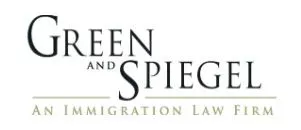July 15, 2016 – We have been receiving an increased number of inquiries regarding the standards for I-94 issuance, i.e. the duration of stay stamping received from the U.S. authorities upon entry to the U.S. Specifically, we have received inquiries related to Canadian nationals traveling for business and pleasure under B-1 and B-2 status respectively. In short, there is no standardized time permitted. It is possible per regulations to be admitted up to a year as a visitor for business or pleasure upon each entry to the U.S., but it is always to the discretion of the reviewing officer to determine how long an individual is permitted entry. The practical standard for visa-exempt Canadians, as determined by consensus of U.S. Customs and Border Protection (CBP) officials, is six months. The simple rationale is six months is half a year. This allows the individual to enter for the temporary visit and return to their place of residence, Canada, after six months thus not sacrificing the concept of a "visit" to the U.S. As mentioned, this determination is made upon each entry to the U.S., even after brief returns to Canada. Implicit in this determination by an officer, is demonstrated evidence of the applicant's maintenance of continuing and established residence in Canada to which they intend to return following the "visit."
The recent trend we have seen is a growing consensus among
officers to maintain the original six-month window granted for
individuals traveling back and forth between the U.S. and Canada
during that six-month period. For example January 1 to June 30th,
entry is granted on January 1st and the officer will hold the
applicant to that June 30th expiration despite returns to Canada
during that period. This can be the case even after prolonged
returns to Canada of several months but short of the original six
months granted.
Even though this is increasingly the standard, is it is always
possible to request an additional amount of time, i.e. a new
six-month period or whatever time is necessary for the applicant to
complete their U.S.-based activities. It should be
understood, however, that this new trend allows a buffer for an
officer to ask questions about the individual's intent to
"visit." If an applicant requests additional time
outside of the six-month period granted, or a brand new six-month
period, an officer would scrutinize both intent and evidence of the
applicant's continuing maintenance of Canadian residence.
Ultimately, the question would be: Is the applicant still
"visiting" the U.S. or has the U.S. become the
applicant's primary residence?
For further discussion of I-94 issuances and its intricate nuances please contact Green and Spiegel.
Upcoming Green and Spiegel Webinar- Inside Immigration July 28th, 2016
When: Thursday, July 28th, 2016 from 12:00pm to 12:45pm EST
Inside Immigration is a monthly call featuring Green and Spiegel's immigration lawyers covering a broad range of topics in immigration law, including:
- Recent developments
- Trends in immigration law
- Expert insight
The July webinar will focus on a wide variety of immigration
issues that are of interest to many businesses and individuals
employees. This month's speakers are Green and
Spiegel's very own:
Shoshana Green
Partner
LinkedIn, Twitter
Hilete Stein
Senior Associate
LinkedIn
Each call will include an overview of recent news and hot topics followed by a Question and Answer session. These calls are free to join. Please click here to register.
The content of this article is intended to provide a general guide to the subject matter. Specialist advice should be sought about your specific circumstances.

